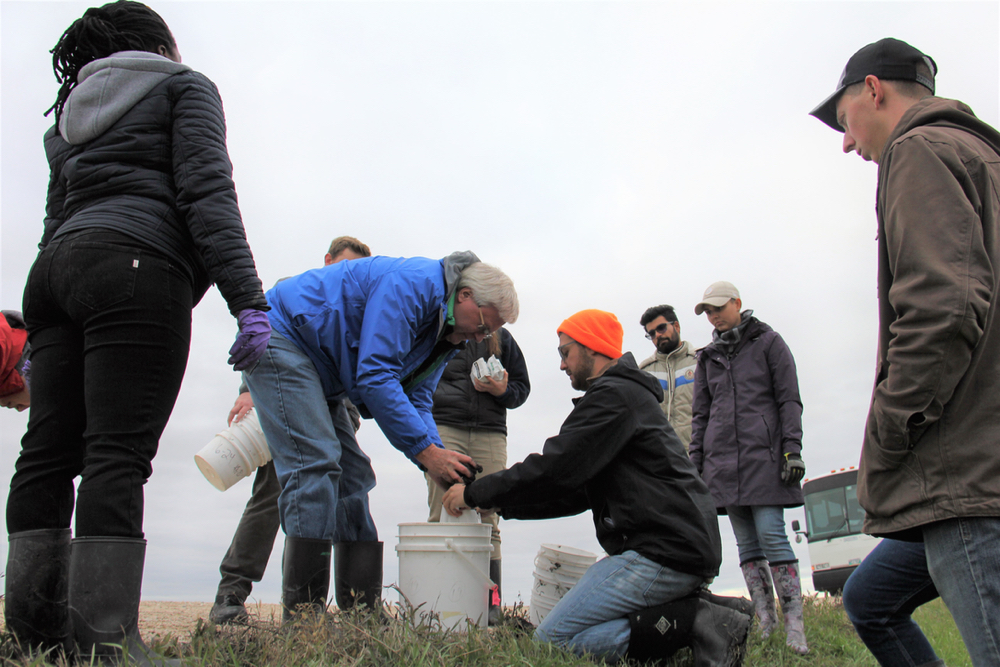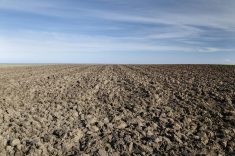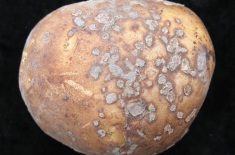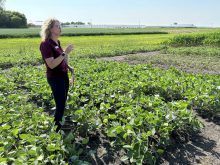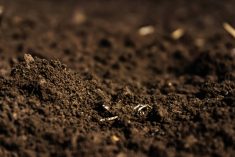Soil testing. One could call it the agricultural equivalent of a blood test, which shows which and what quantity of nutrients are in the soil so producers can make informed decisions about next year’s nutrient strategy.
But less than half of farmers soil test every year, according to stats from Manitoba Agriculture. In 2016, 41 per cent of Manitoba farmers said they soil test every year.
To gain some insight, the Manitoba Co-operator boarded a bus with Don Flaten and agronomy students from the University of Manitoba to travel to Brunkild, take some soil samples and talk about the process.
Read Also

Manitoba canola industry has new frontiers
Canola oil is still the main priority for the sector, but canola meal is increasingly the subject of research looking for new markets and uses for the oilseed’s byproduct.
Why it matters: Soil testing allows producers to make more informed decisions on their nutrient management strategies, but stats show less than half of farmers test their soil regularly.
Flaten divided the class into seven groups of students. Prior to the trip, the groups interviewed farmer David Laudin about his fields, crop goals and residue and nutrition management practices.
Aboard the bus they filled out forms describing the location of the field, previous crop, planned crop (with second and third choices), yield goals and other information.
Flaten said an agronomist would also ask the farmer about their equipment availability, labour availability, likes and dislikes. He said Laudin has a long-standing relationship with an agronomist who has a thorough understanding of his situation.
Sampling service providers would drive a vehicle onto the field and use a hydraulic probe to take samples. Laudin’s fields were waterlogged after record-breaking rainfall. The students hiked onto the fields with hand-operated augers.

At each sample point, the students took two samples: a six-inch sample tests for more stationary nutrients and a second for more mobile nutrients that might move downward with the rains.
The rain has made it a stressful period to make soil sampling work, Flaten said. It’s challenging to get onto the field and producers may not be motivated to soil test.
“If they’ve still got a lot of harvesting to do, they may not be thinking very much about their fertilizer program for next year,” he said.
On the Prairies, fall usually doesn’t bring enough moisture to change the soil’s nutrient content much. The soil freezes for five months, preserving the fall’s nutrient profile for the most part.
However, given how much rain September brought, if producers in harder-hit areas soil tested in August, nitrogen levels indicated in their results may have changed.
Flaten added that not all nutrients are as mobile as nitrogen.
“I think a lot of the rest will probably be pretty close to, you know, what they would normally expect or what they could expect next year,” he said. “There’s still good value in soil testing, even in a year that’s quite wet.”
Once the bus arrived at Laudin’s land, the students split up into different fields. The Co-operator tagged along with two students as they slogged across a muddy, unharvested soybean field. The squishy soil wasn’t hard to auger, but the mud clung to the probe and had to be pried off.
The students combined 16 zero- to six-inch samples and 16 six- to 24-inch samples taken from different points on the field to form a composite sample. The class would then send samples from each field to two different labs for testing.
Composite sampling treats the field as a unit, and based on these recommendations agronomists may give one nutrition plan for the entirety.
Many service providers also provide zone sampling, which uses precision agriculture data, imaging, soil electrical conductivity and other methods to divide the field into zones of similar production capacity.
Each zone is sampled separately, and a separate 4R nutrient plan can be made for each zone.
Once the students get their results, they’re tasked with making recommendations to Laudin on how he should apply nutrients to his fields.
Flaten said he expected completely different results from all of them.
“There’s so many different options,” he said.
For instance, on one field of perennial ryegrass, Laudin has a goal for how much seed he wants to take off next year.
Flaten said one group might decide to apply granular urea to the field early in the spring before it gets too warm, and (hopefully) before there’s a high chance of rain. This is a low-cost product, and if the rain co-operates, they won’t have too much loss.
Another group might recommend liquid fertilizer applied in surface bands to minimize loss. It depends on the farmer’s need for price or risk management, as well as available equipment or labour.
The students will get a second interview with Laudin and nail down a few more facts. An agronomist with an established relationship with a farmer would have more details, therefore reducing variables.
“There is a lot of variability and that’s actually good,” Flaten said. “A good decision for one farm might not be a good decision for another.
“There’s no two farmers who do things exactly the same as each other,” Flaten added. “Having a good idea of what options you’ve got is important and understanding the pros and cons of those options and being able to select the option that suits that situation is really good.”
In November, the students will present their recommendations before a panel of agronomists. Presentations will be worth a percentage of their mark, but students will also have the opportunity to win a $500 prize for best presentation.






